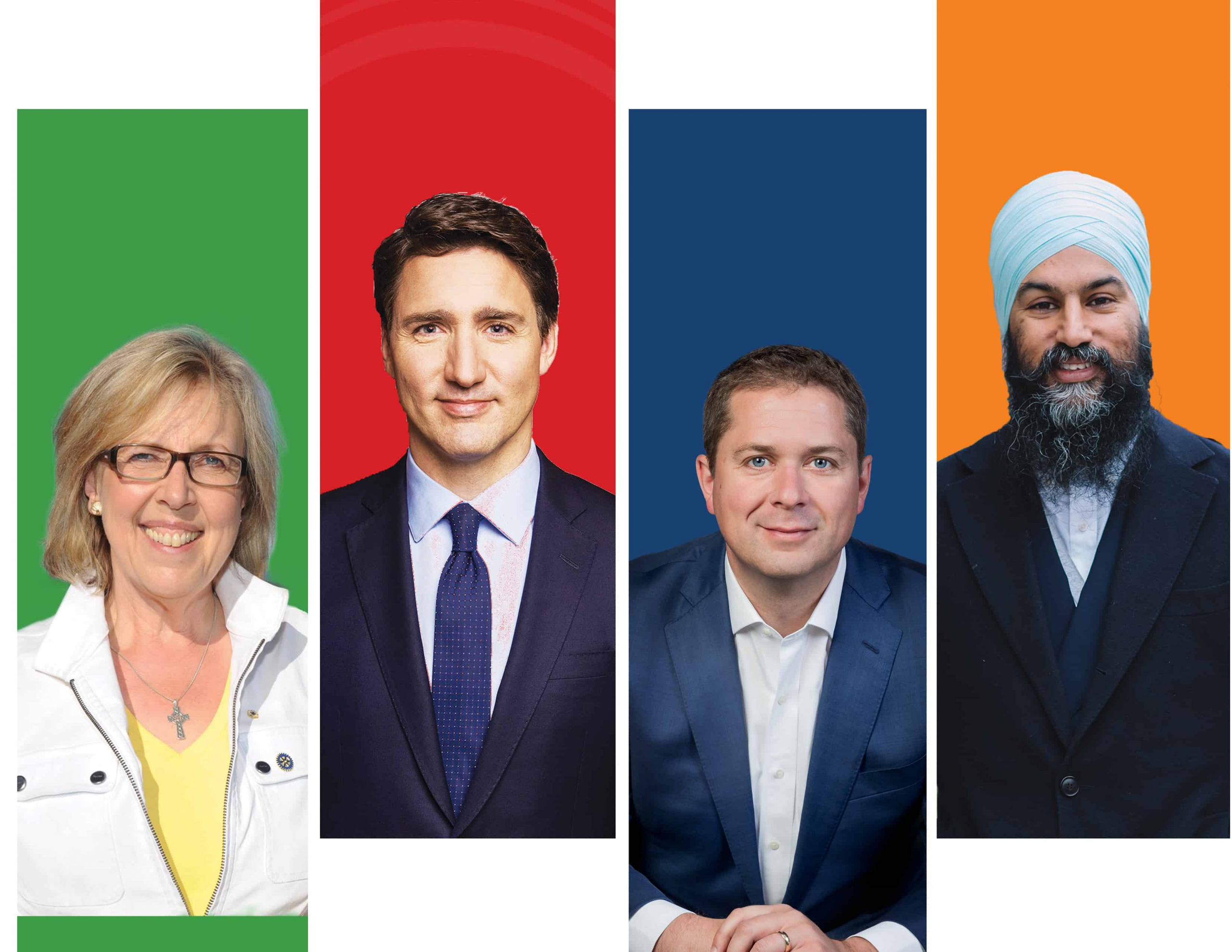As young people are part of the biggest voting bloc in the country, each of the major parties have platform proposals made with students in mind. With the final voting day quickly approaching, The Varsity looks into all four major party platforms on the biggest issues for students.
Cost of university
Liberal Party leader Justin Trudeau has vowed to increase Canada student grants and provide a two-year grace period after graduation before individuals need to begin paying off their student loans. Additionally, graduates will not be obliged to begin loan payments until they reach an income of $35,000 per year.
Andrew Scheer’s Conservative Party platform does not specifically address tuition; however, it does promise to increase government contributions to Registered Education Savings Plans, from 20 per cent to 30 per cent for every dollar instead. Also, in order for colleges and universities to be eligible for research grants, they must meet a “commitment to free speech and academic freedom” requirement.
Jagmeet Singh promises that the New Democratic Party (NDP) would work with the provinces to move toward making “post-secondary education part of [the] public education system.” The NDP also pledges to increase student grants and end interest on federal student loans.
For the Green Party, Elizabeth May would make “college and university tuition free for all Canadian students.” The Greens also noted that postsecondary education access for Indigenous Peoples is a key part of treaty obligations.
No party mentions plans specifically for international student tuition in their platform.
Repatriation of Indigenous artifacts and remains
All four major parties affirmed their commitment to reconciliation. The Truth and Reconciliation Commission emphasizes, among other things, the importance of returning Indigenous artifacts and remains to their communities upon their demands. The Liberals specifically highlighted repatriation of Indigenous cultural property in their platform.
According to a 2017 investigation by the Aboriginal Peoples Television Network, out of the 12 universities contacted, U of T “has the highest number of Indigenous human remains, with 550 individuals, all of which are bone fragments.”
Transit
The Liberal platform pledges to make federal funding for public transit permanent and predictable to keep up with rising costs of construction.
Scheer would implement a “Green Public Transit Tax Credit” which promises a credit for transit passes that allow unlimited travel on subways and busses. The Conservatives would also prioritize infrastructure projects, including the expansion of TTC services.
The NDP committed to working with provinces and municipalities to move toward fare-free public transit. In addition, they would “modernize and expand” transit with a focus on low carbon projects.
The Green Party would develop a national transportation strategy with the goal of reaching net zero carbon for on-ground public transportation by 2040. This would focus on developing rail services and building high-speed rail connecting Toronto, Ottawa, and Quebec City.
Housing and health care
Trudeau’s platform notes the National Housing Strategy the Liberals implemented which built affordable housing. In addition, they promise to reduce cell phone bills by 25 per cent, and implement universal pharma care.
The Conservative housing policies relate specifically to homeowners and buyers. Scheer says widespread tax cuts would increase the money in Canadian pockets. Their platform makes no mention of universal pharma care, but they promise to “improve access to medications.”
Singh promises to create 500,000 affordable housing units over the next ten years. The NDP would cap cell phone bills to align with the global average. It would also implement universal pharma care and take steps toward providing more accessible mental health care.
May’s platform pledges to make housing “a legally protected fundamental human right for all Canadians and permanent residents.” The Green platform supports universal pharma care and would also see the implementation of a “Guaranteed Liveable Income,” a “negative income tax” to replace other federal transfers such as social assistance, disability support, and child tax benefits.
Employment and wages
The Liberals vow to take a more “intersectional” approach to job initiatives, such as making the Youth Employment Strategy further consider racialized and Indigenous youth. Additionally, Trudeau’s party would create a federal minimum wage of $15, rising with inflation, per hour starting in 2020.
The Conservative platform includes a promise to work with colleges and universities to ensure that their curricula prepare students for the demands of today’s job market.
As well as implementing a $15 federal minimum wage covering 900,000 workers, the NDP would ban unpaid internships that are not part of education programs. The platform also vows to add gender identity and expression, and sexual orientation to the Employment Equity Act.
The Greens would also implement a $15 federal minimum wage. Their main focus is creating new jobs in a “green economy” and allowing for a “just transition” for workers in fossil fuel sectors.
Immigration
The Liberals commits to making the citizenship application free for permanent residents.
The Conservative Party states that international students educated in Canada “are ideal candidates” for economic immigration and it would work to keep them here after graduation.
The NDP prioritizes family reunification and promises to end the cap on applications to sponsor parents and grandparents. Earlier this year, the cap was reached in less than 11 minutes.
The Green Party vows to speed the family reunification process, and ameliorate the pathway for international students to apply for permanent residency and citizenship.


